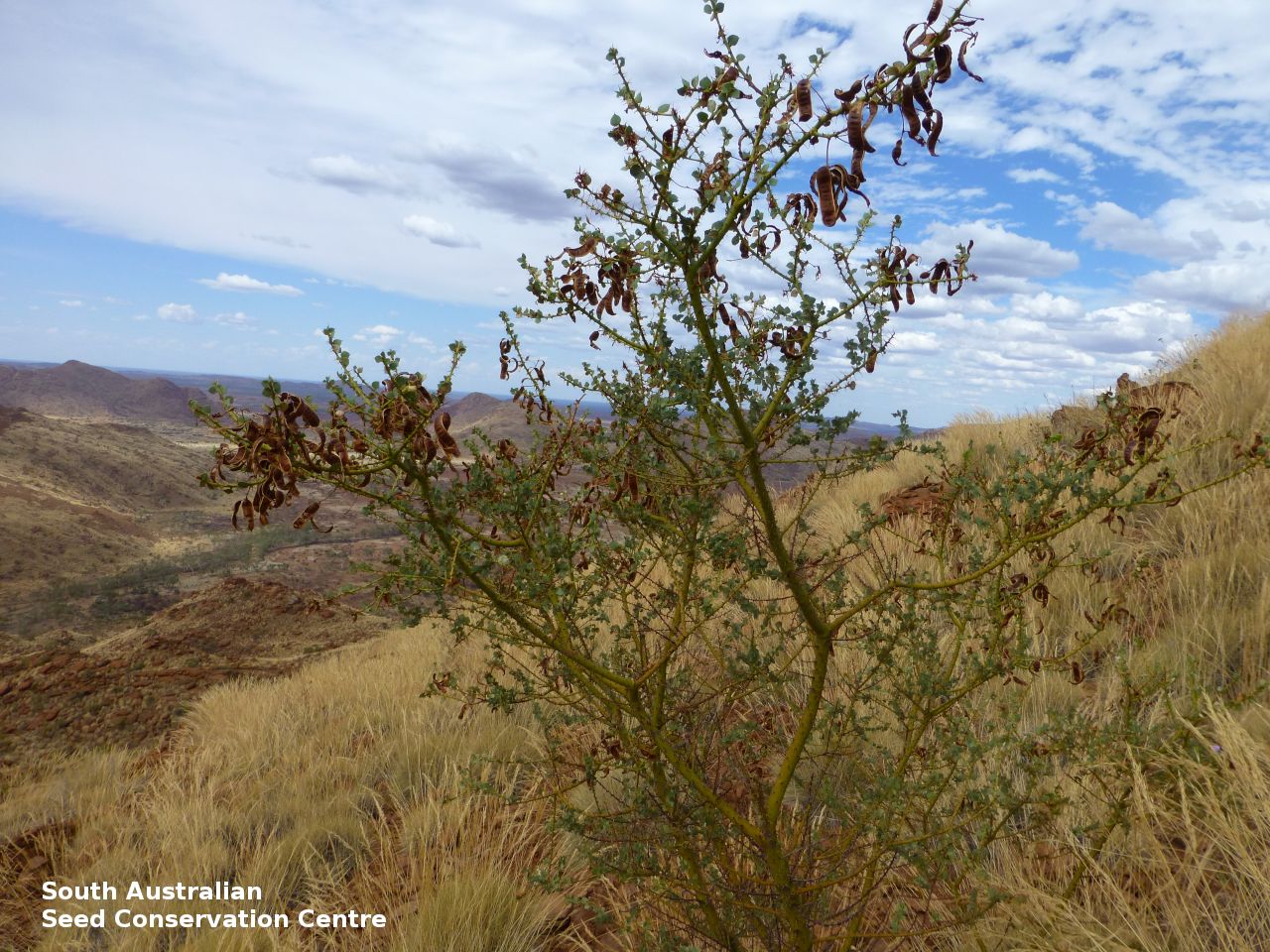
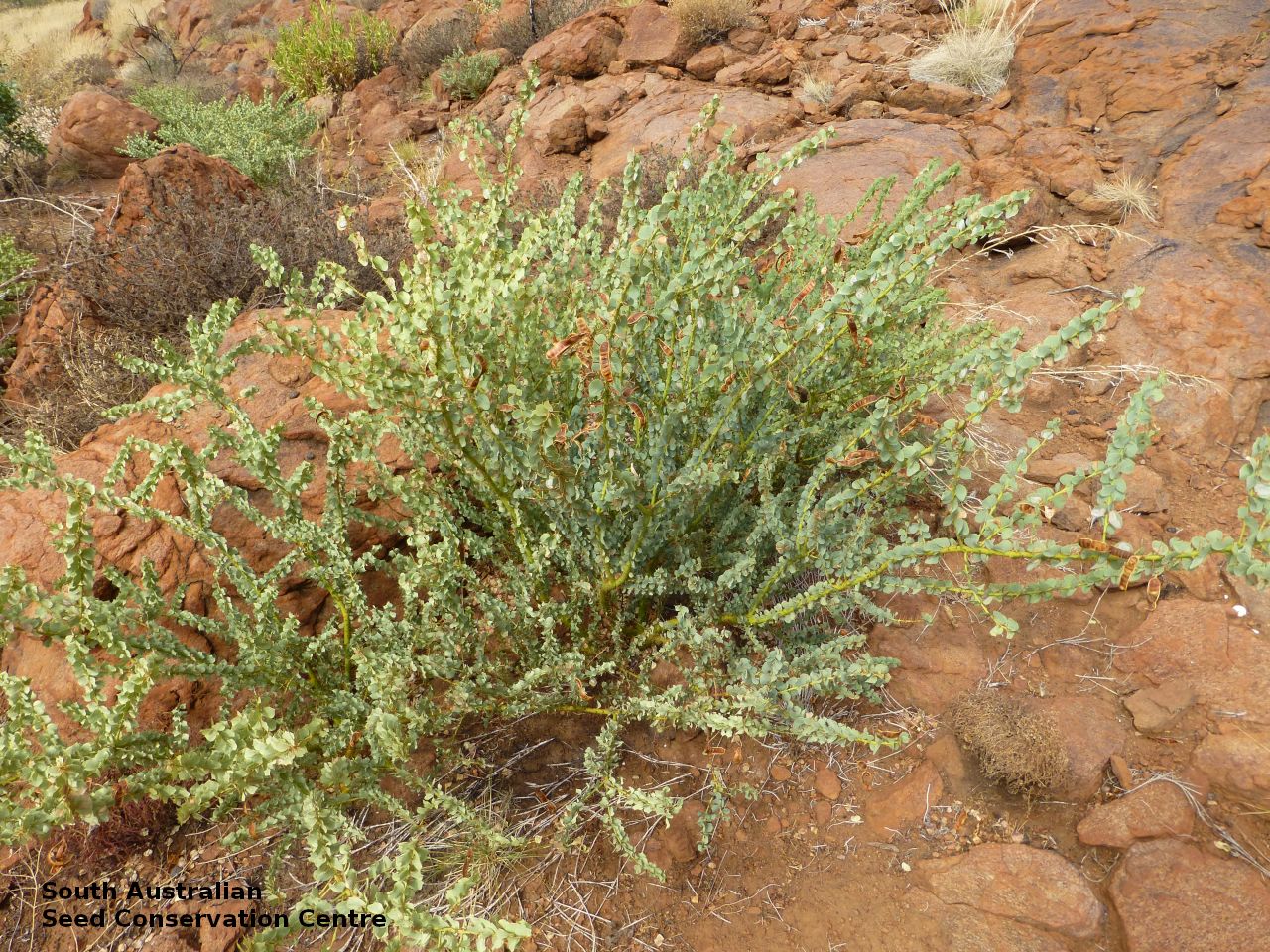
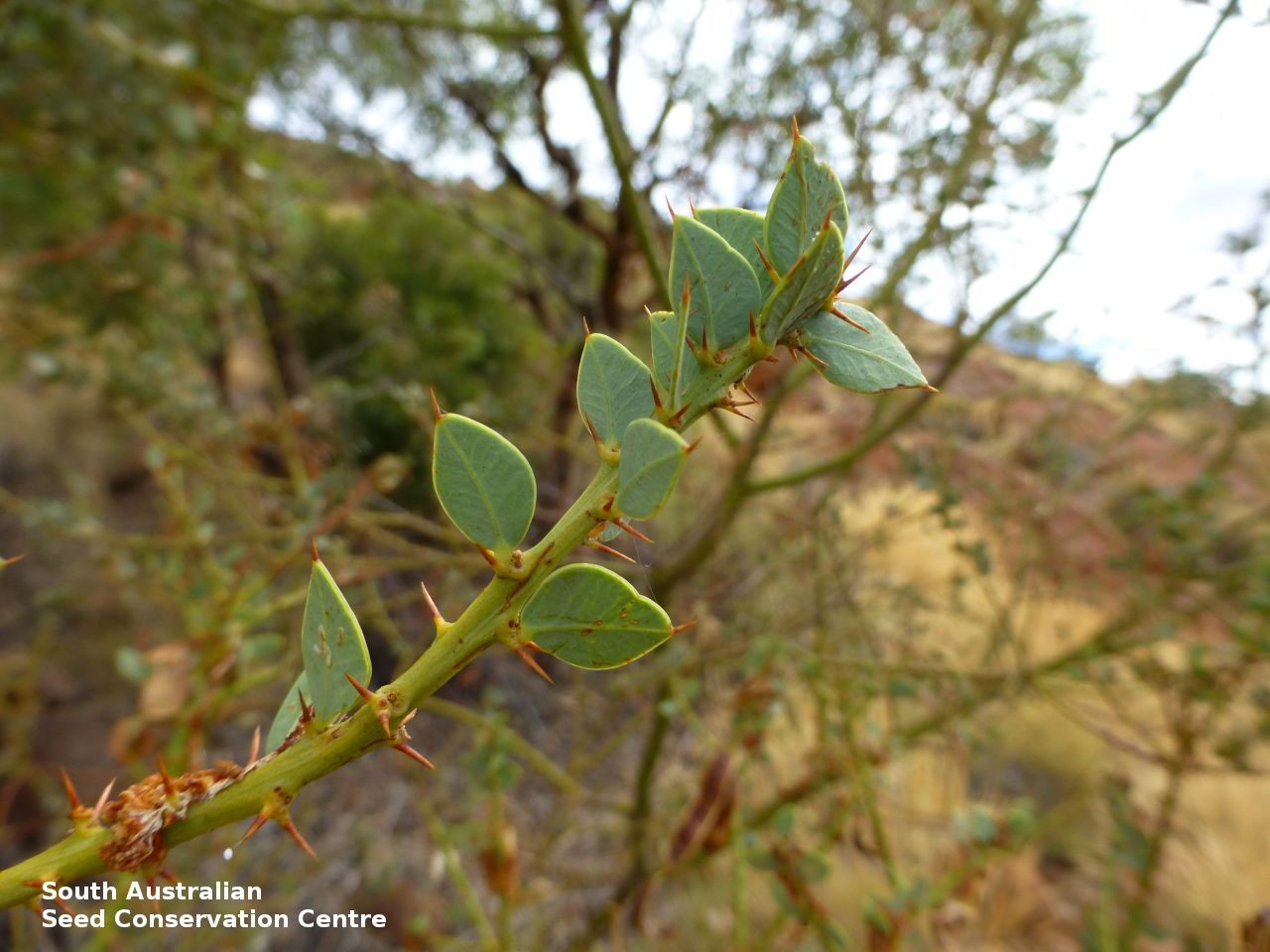
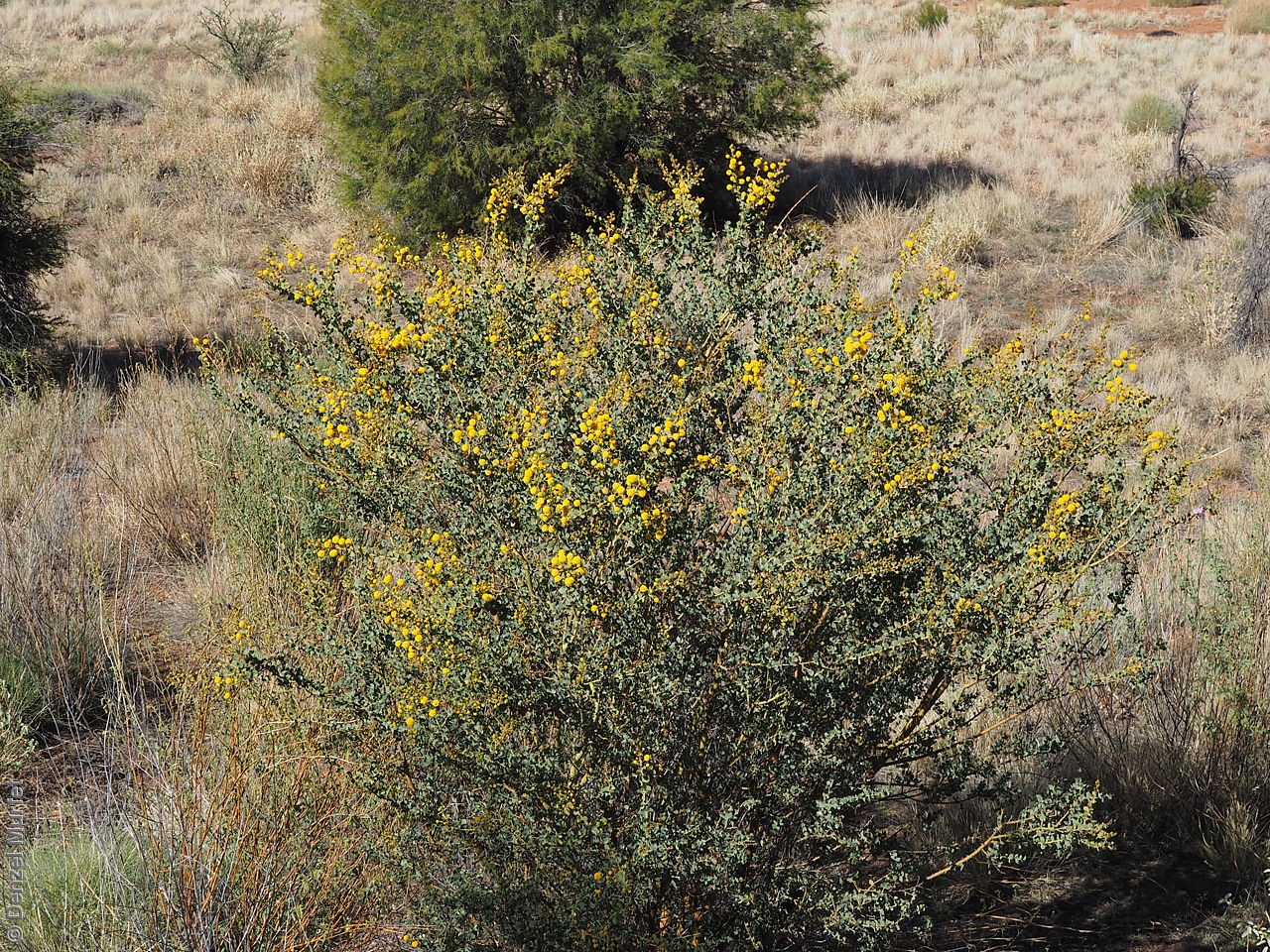
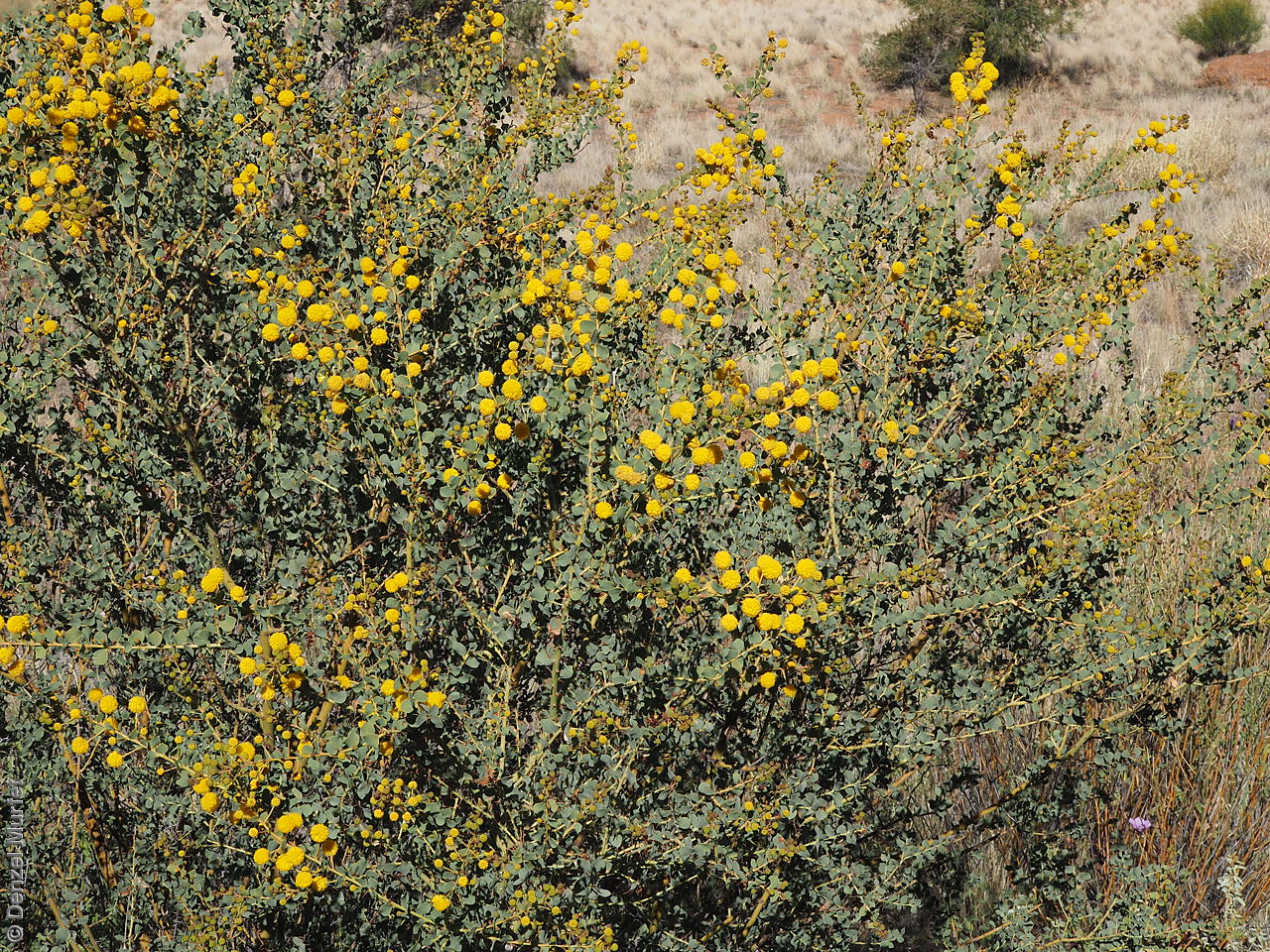
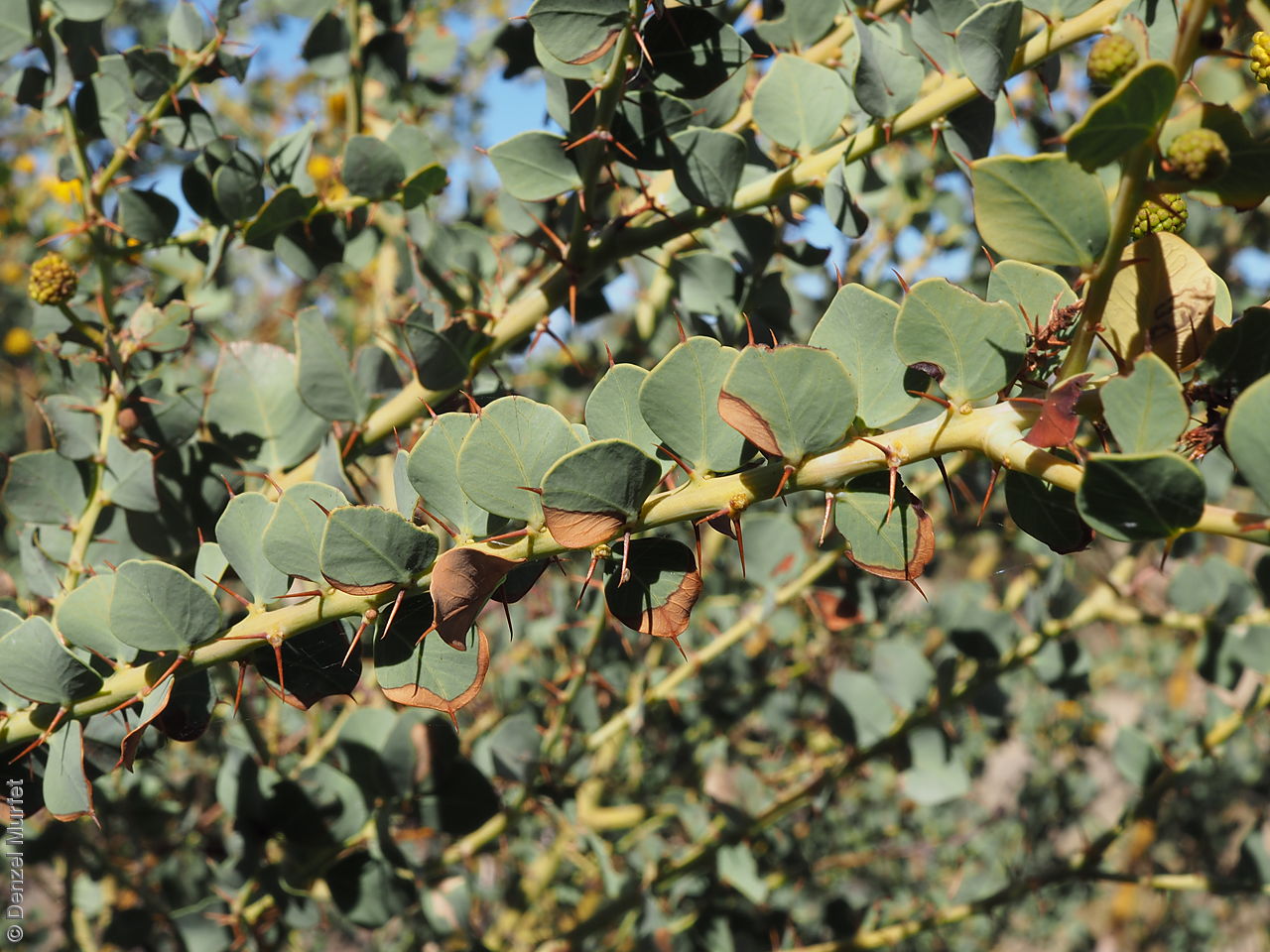
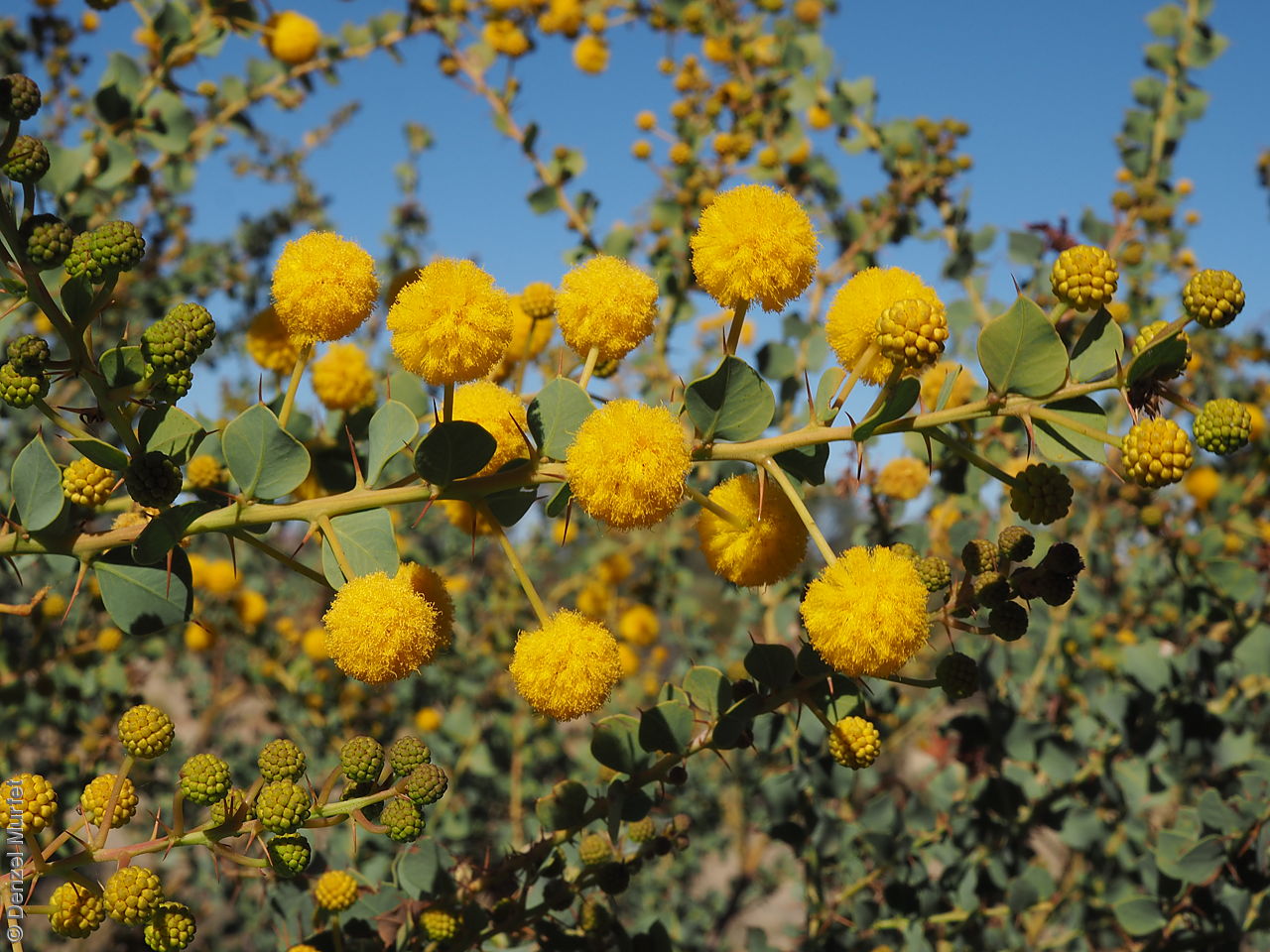
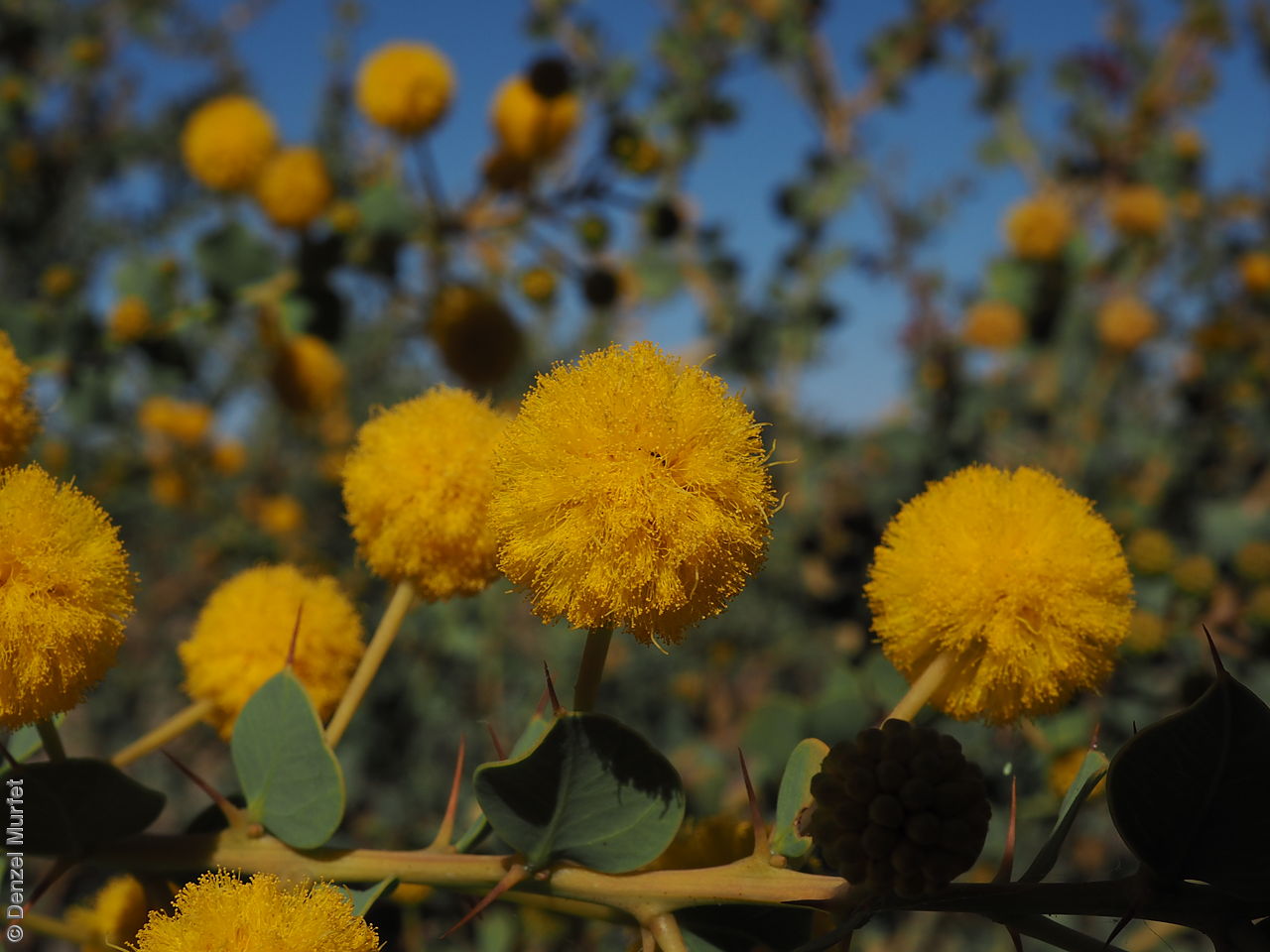
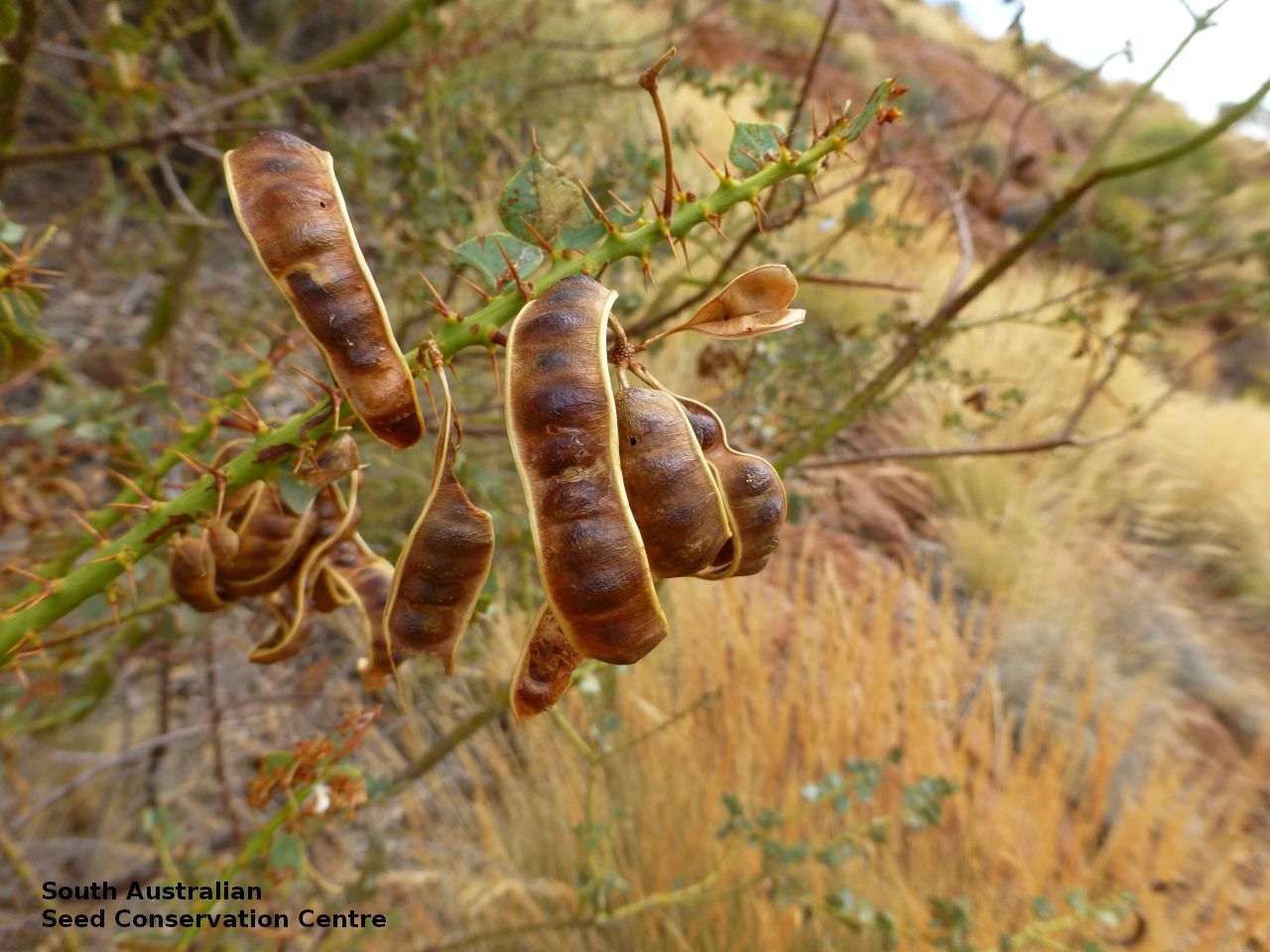
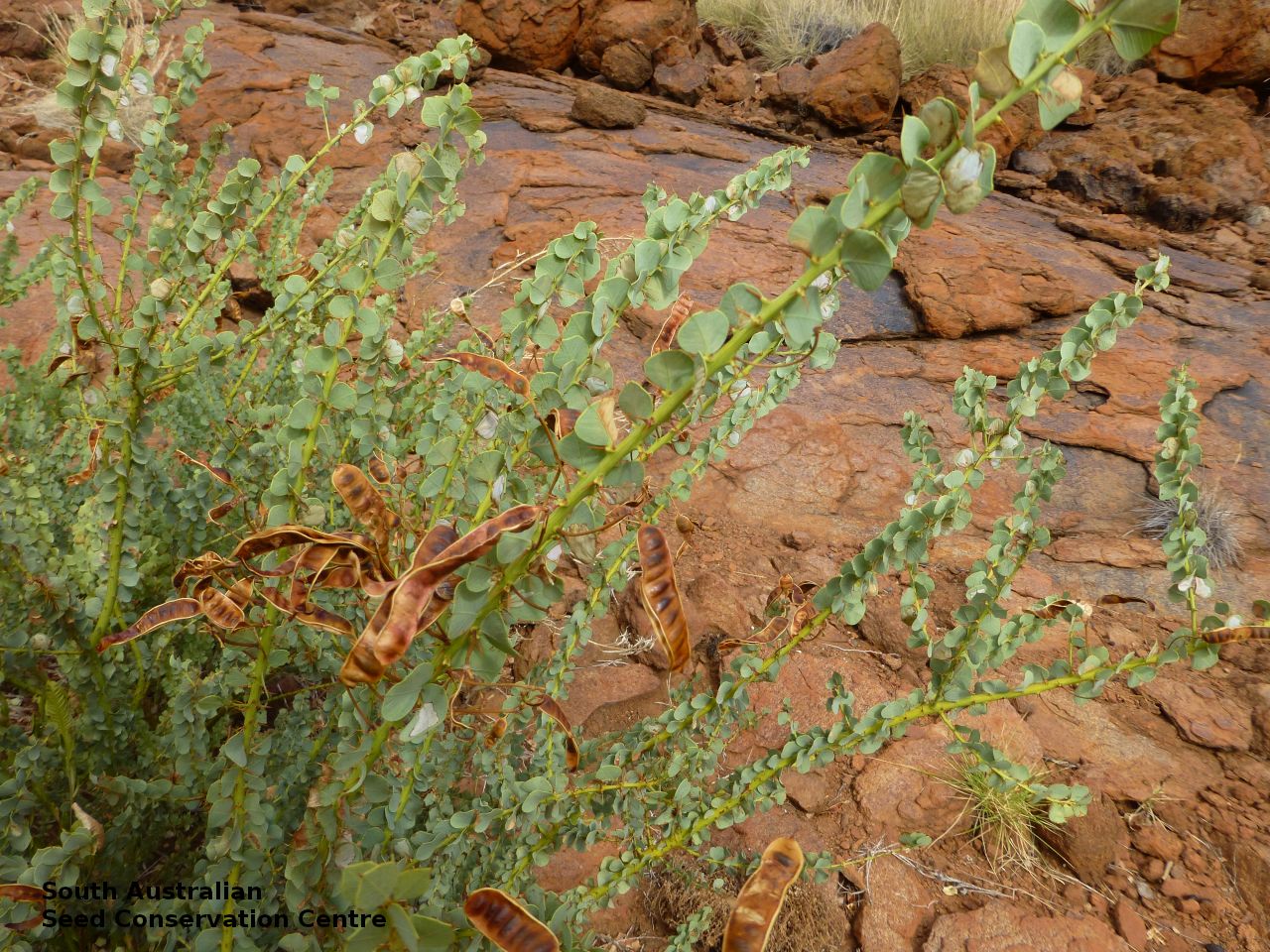
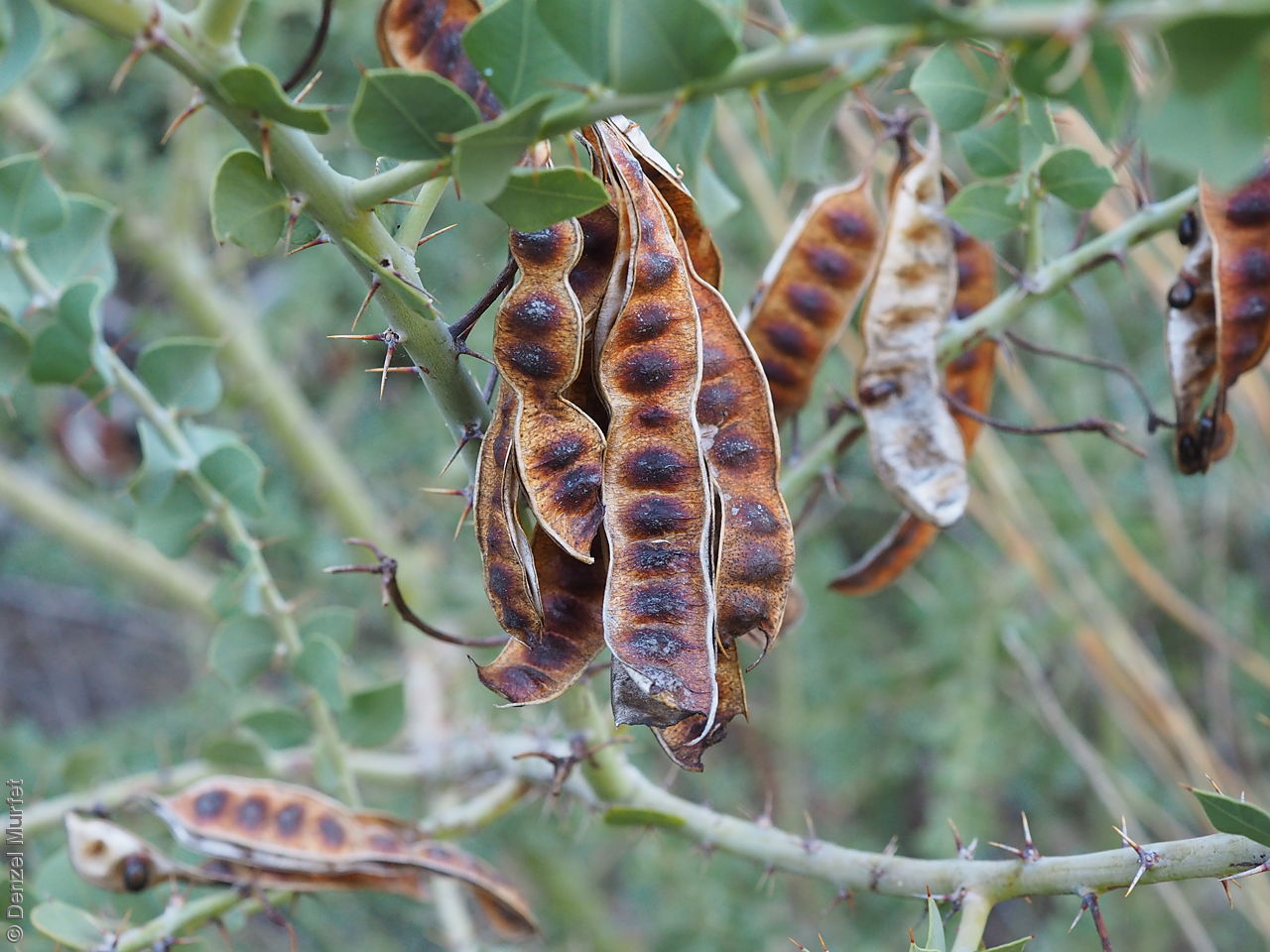
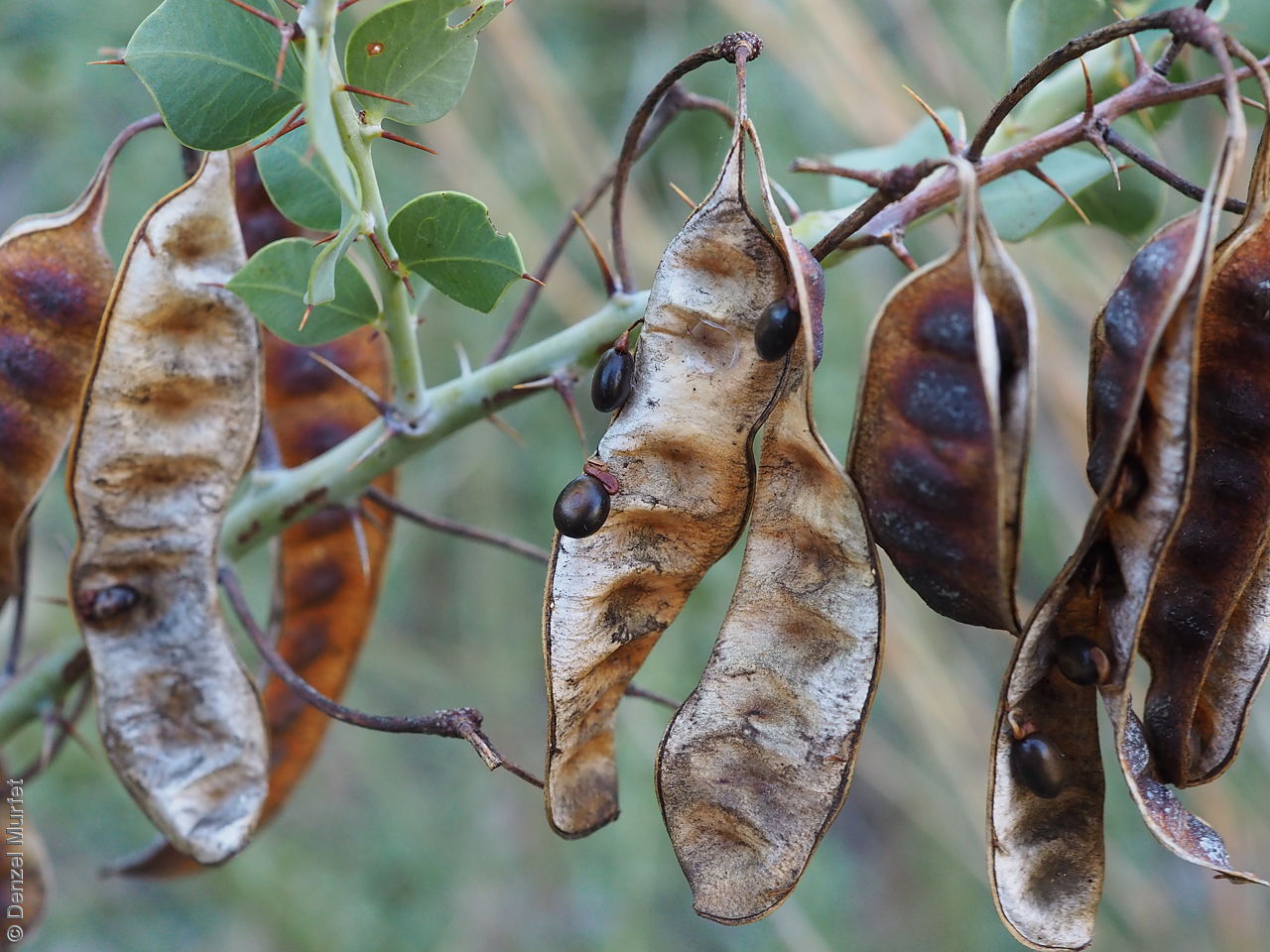
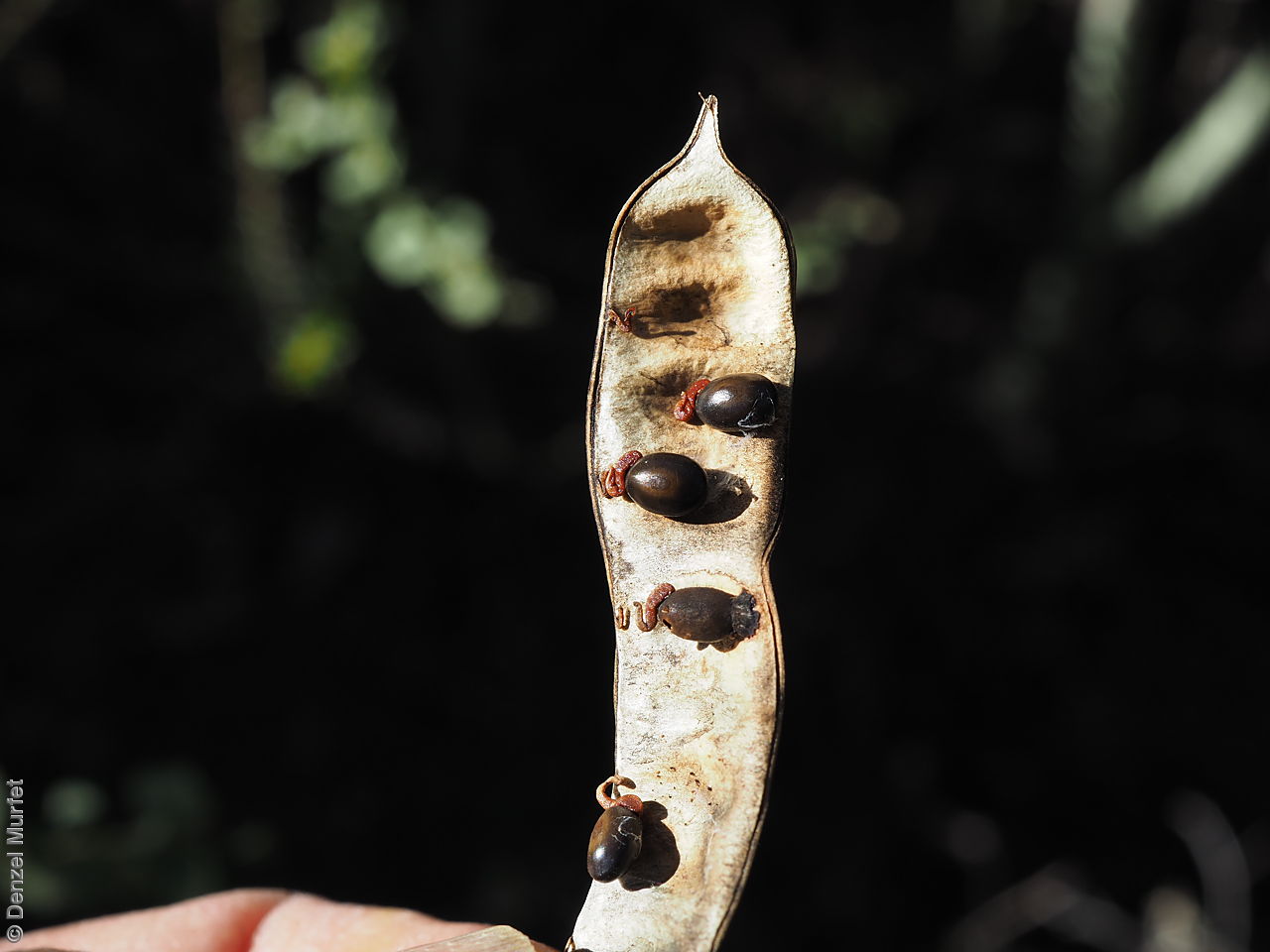
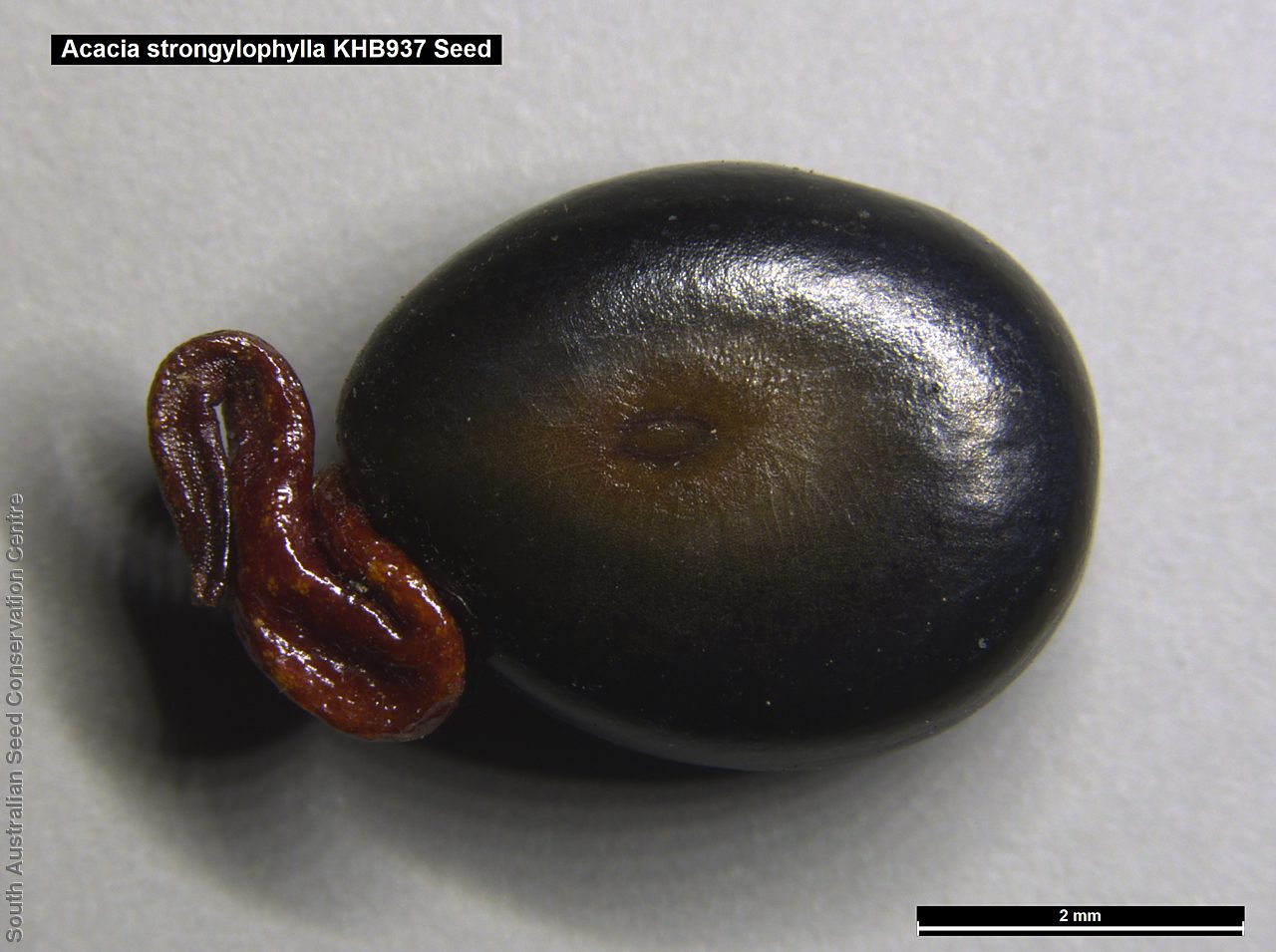
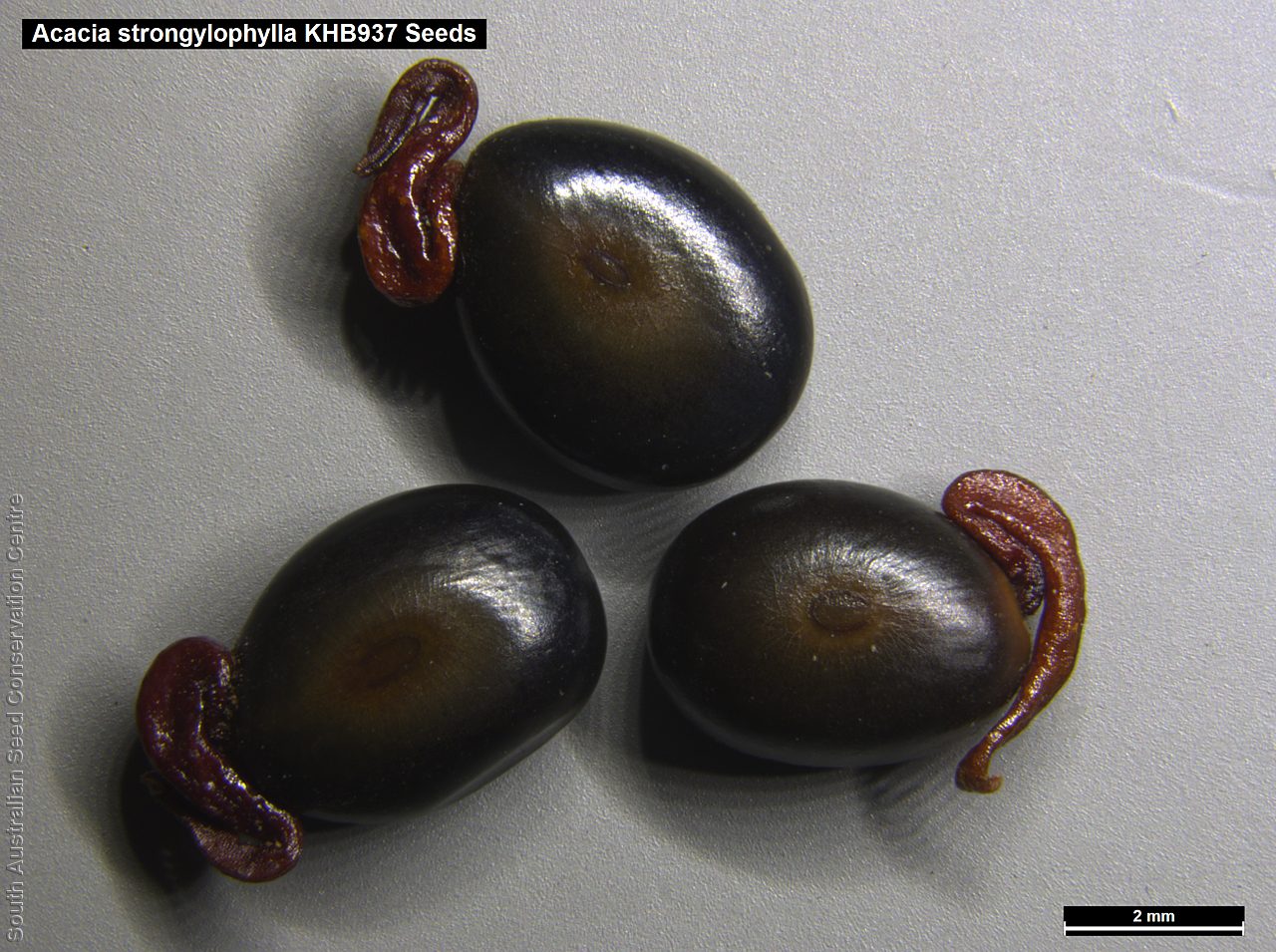

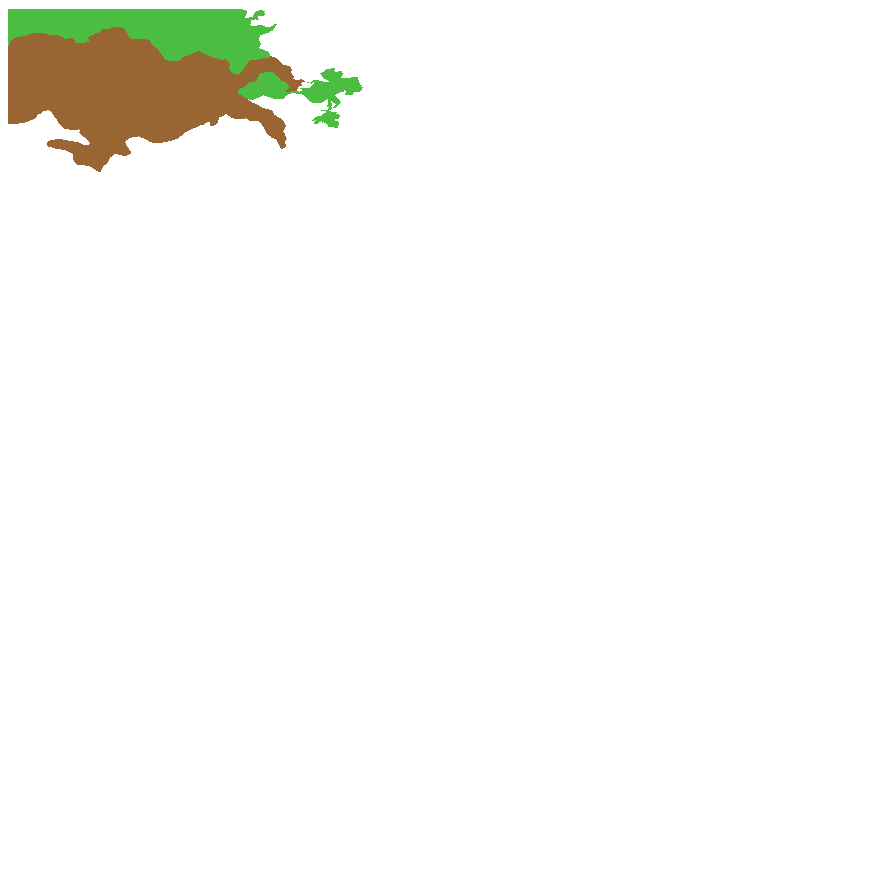
Botanical art
Prior names
Racosperma strongylophyllum
Etymology
Acacia from the Greek 'akakia' and derived from 'ake' or 'akis' meaning a sharp point or thorn and 'akazo' meaning to sharpen. Dioscorides, the Greek physician and botanist used the word in the 1st century AD for the Egyptian thorn tree, Acacia arabica. Strongylophylla from the Greek 'strongylos' meaning round and 'phyllon' meaning a leaf.
Distribution and status
Found in the far north-west of South Australia, mainly in the Musgrave and Everard Ranges, growing on rocky hillsides and valleys on shallow red, firm, sandy soils and red earth. Also found in Western Australia and Northern Territory. Native. Uncommon in South Australia. Rare in Western Australia. Common in Northern Territory.
Herbarium region: North Western
NRM region: Alinytjara Wilurara
AVH map: SA distribution map (external link)
Plant description
Erect, glabrous, prickly, straggly shrubs to 3 m high, with slightly flattened branchlets, yellowish-green to reddish-brown, sometimes pruinose; bark smooth thin. Leaves rhomboid-orbicular to 2 cm long and 20 mm wide, flat, dull green or somewhat glaucous, with 1 major vein prominent, forming a pungent mucro to 5 mm long; lateral veins oblique and conspicuous. Flower-spike simple and axillary, solitary or twin with large globular deep golden-yellow flower-heads. Flowering between June and October. Fruits are brown oblong pod to 8 cm long and 12 mm wide, flat but usually raised over seeds showing the outline of the seeds. Apex rounded obtuse or acute with a short oblique point; margins thickened, straight or with an occasional constriction. Seeds are hard, dark brown to black ovoid seed to 5 mm long and 3.5 mm wide. Seed embryo type is investing.
Seed collection and propagation
Collect seeds between October and January. Collect mature pods that are turning bro, with hard, dark seeds inside. Place the pods in a tray and leave to dry for 1-2 weeks or until the pods begin to split. Then rub the dried pods to dislodge the seeds. Use a sieve to separate any unwanted material. Store the seeds with a desiccant such as dried silica beads or dry rice, in an air tight container in a cool and dry place. This species has physical dormancy that needs to be overcome for the seed to germinate (e.g. nicking or softening the seed coat).
| Location | No. of seeds (weight grams) | Number of plants | Date collected | Collection number Collection location | Date stored | % Viability | Storage temperature |
|---|---|---|---|---|---|---|---|
| BGA MSB | 2,475 (34.3 g) 2,475 (34.3 g) | 31 | 4-Dec-2003 | PJA57 North Western | 1-Sep-2004 | +5°C, -18°C | |
| BGA | 2,000 (50 g) | 40+ | 23-Jul-2017 | KHB937 North Western | 30-Jun-2018 | 82% | -18°C |
Number of plants: This is the number of plants from which the seeds were collected.
Collection location: The Herbarium of South Australia's region name.
% Viability: Percentage of filled healthy seeds determined by a cut test or x-ray.